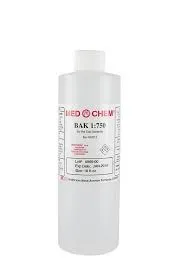coagulation flocculation
Coagulation and Flocculation Essential Processes in Water Treatment
Coagulation and flocculation are two critical processes used in water treatment to remove suspended particles, colloids, and impurities from water, ensuring that it is safe for consumption and meets environmental standards. These processes play a vital role in both municipal and industrial applications, contributing to the purification of drinking water and the treatment of wastewater.
Understanding Coagulation
Coagulation is the first step in the treatment process, typically involving the addition of coagulants—chemicals that promote the agglomeration of small particles into larger ones. Common coagulants include aluminum sulfate (alum), ferric chloride, and polyaluminum chloride. When these coagulants are added to water, they neutralize the charge of suspended particles, which can be negatively charged due to the presence of contaminants. This neutralization is essential because it reduces the repulsive forces between particles, allowing them to come together and form aggregates.
The effectiveness of coagulation depends on various factors, including pH, temperature, and the concentration of coagulants used. Optimizing these conditions is critical for achieving maximum removal of contaminants. Additionally, the type of coagulant used can have significant implications for the overall efficiency of the treatment process, as different coagulants are effective for different types of impurities.
The Process of Flocculation
Following coagulation, the next step is flocculation. This process involves the gentle stirring of water to encourage the formation of larger aggregates, known as flocs. During flocculation, smaller coagulated particles collide and stick together, forming larger flocs that can settle out of the solution more easily. Flocculants, which are often used in conjunction with coagulants, can enhance this process. These substances are typically high-molecular-weight polymers that increase the size and weight of the flocs.
coagulation flocculation

Flocculation occurs in a series of stages slow mixing allows for the gentle contact of particles, which promotes the growth of flocs, while the duration and speed of mixing are carefully controlled to prevent the breakage of newly formed flocs. The design of flocculation tanks often includes the use of baffles or other mechanisms to ensure uniform mixing and effective contact between particles.
Importance of Coagulation and Flocculation
The significance of coagulation and flocculation in water treatment cannot be overstated. First and foremost, these processes are essential for removing turbidity, which is caused by suspended solids in water and can harbor harmful microorganisms and pollutants. By reducing turbidity levels, coagulation and flocculation enhance the effectiveness of subsequent filtration and disinfection processes.
Moreover, these processes also contribute to the removal of organic matter, metals, and other contaminants that can adversely affect water quality. The formation of larger flocs makes it easier for subsequent treatment steps, such as sedimentation and filtration, to remove impurities effectively.
In addition to their application in drinking water treatment, coagulation and flocculation are vital in treating industrial wastewater. Various industries, including textiles, paper manufacturing, and food processing, generate effluents laden with suspended solids and chemicals. Effective treatment through coagulation and flocculation helps in minimizing the environmental impact of these discharges.
Conclusion
In conclusion, coagulation and flocculation are indispensable processes in the realm of water treatment. By facilitating the removal of suspended particles and impurities, these methods not only protect public health but also contribute to the sustainability of water resources. As water quality regulations become increasingly stringent, the optimization of coagulation and flocculation techniques will play a crucial role in the future of water treatment technologies. Understanding and improving these processes will be essential to ensure clean and safe water for generations to come.
-
The Power of Isothiazolinones in Modern ApplicationsNewsMay.08,2025
-
Flocculants in Water TreatmentNewsMay.08,2025
-
Flocculants and Chemical Solutions: What You Need to KnowNewsMay.08,2025
-
Flocculants and Chemical Solutions: A Growing IndustryNewsMay.08,2025
-
Essential Chemicals: Polymaleic Anhydride and MoreNewsMay.08,2025
-
Acrylic Polymers: Essential Solutions for IndustryNewsMay.08,2025





